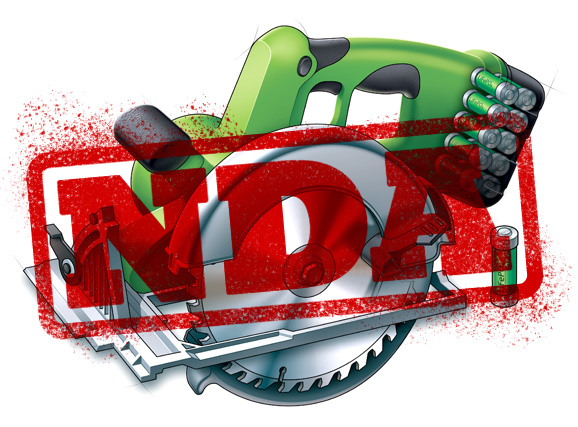
Technical Illustration and Non-Disclosure Agreements
Almost every project I take on involves signing a Non-Disclosure Agreement of some sort. An NDA is a contract that protects the client as well as the illustrator from legal and financial liability should confidential information related to the project fall in the hands of a third party.
A client with a patent pending wouldn’t want their illustrator disclosing details of a project to a competitor (or anyone for that matter). On the other hand, the illustrator needs to show work in their portfolio in order to bring in more work. The NDA contract ideally strikes a balance between the needs of the two parties.
For example, they may agree that everything is to be kept under wraps until the project is completed and published by the client. After that, the illustrator is free to use the sketches, roughs and finals for promotional purposes or even reuse or resale. This is a typical NDA clause for magazines
They may agree that all roughs, reference materials and correspondence be kept confidential, and that the illustrator can use only the final image. This is typical when working with science and technology firms.
Or the client may insist that the project be kept strictly confidential in perpetuity (Forever. Forever ever.). Because an illustrator needs to show work to get work, a clause like this seriously restricts future work opportunities. This factor must be taken into consideration when negotiating a fee for the project.
How to Get the Most out of NDA Negotiations
- Understand your client’s needs. Clients often use boilerplate NDAs, meaning they’re often more restrictive than they need to be. Figure out what aspects are important to the client, and propose that the other restrictions be loosened.
- Explain your needs. The client most likely hired you because of the work they saw in your portfolio. You might be missing out on the next job because you can’t show your work from this one. Explain to the client how that affects your fees.
- Just ask. A contract usually states that changes can be made with express written consent. Once a project concludes, send the client a friendly follow-up email expressing your pride in the work and your desire to include it in your portfolio. Keep a copy of the email along with the NDA contract.
- Deal with it. Sometimes a client really really needs absolute confidentiality. Try to work it into your fees – you don’t want this becoming standard practice. Use self-assigned projects to keep your portfolio updated and keep getting the work you want.
A non-disclosure agreement can work for you or against you. Read it. Understand it. Negotiate it. Abide by it!
How do you deal with non-disclosure agreements? Let us know in the comments!
Very helpful. Thank you